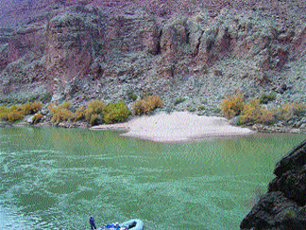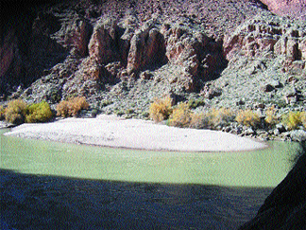
After:

A sandbar downstream of Glen Canyon Dam, at the 30-mile mark on the Colorado River, gained area and volume after an experimental flood last November. [For comparison, note the gap between bushes above the beach.] Courtesy of Mark Schmeeckle, Arizona State University.

